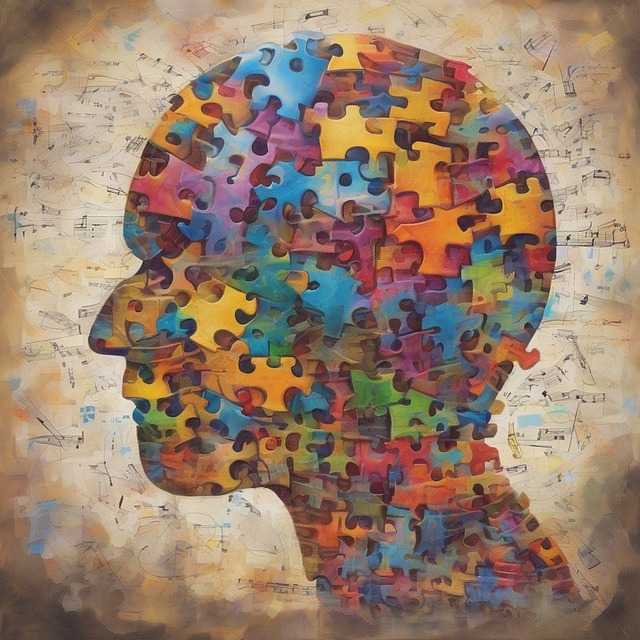Table of Contents
- Exploring the Symbolism of Waves in Artistic Expression
- Techniques for Capturing the Fluidity of Waves in Paintings
- The Role of Color and Light in Depicting Ocean Waves
- Recommended Artists and Movements That Showcase Waves as a Central Theme
- Q&A
- The Way Forward


Exploring the Symbolism of Waves in Artistic Expression
Waves have long been a captivating subject in art, their fluid forms representing a myriad of emotions and concepts. Artists often utilize the dynamic nature of waves to convey activities such as chaos, serenity, and the cyclical aspect of life. Each brushstroke can illustrate the power of the sea or the gentleness of a lapping tide, allowing the viewer to connect emotionally with the work. The movement of waves in paintings can describe more than just nature; they can symbolize transitions and transformations, paralleling the human condition.
In addition to their emotional resonance, waves carry cultural significance across various artistic traditions. In many cultures, waves represent both destruction and renewal, embodying the duality of nature’s power. For example, in Japanese art, such as Hokusai’s “The Great Wave off Kanagawa,” waves are not only stunning visual elements but also powerful forces that command respect and contemplation. This juxtaposition invites viewers to reflect on their own lives, pondering themes of struggle and rebirth.
Furthermore, the colors and shapes of waves can signify different moods within a piece. Bright, vibrant hues evoke feelings of joy or excitement, while deeper, muted tones can underscore melancholy or introspection. Artists meticulously choose their palettes to enhance the emotional impact of their wave representations. Key elements to consider include:
- Color: Determines the mood and emotional response.
- Texture: Smooth strokes may create tranquility, while jagged ones can suggest turbulence.
- Movement: The direction of the waves can guide the viewer’s eye and enhance storytelling.
To illustrate these points, consider the following comparative table of well-known paintings featuring waves:
| Artist | Title | Style | Symbolism |
|---|---|---|---|
| Vincent van Gogh | Starry Night Over the Rhône | Post-Impressionism | Soon to be enveloped by life or death |
| Hokusai | The Great Wave off Kanagawa | Ukiyo-e | Power & Nature’s unpredictability |
| Winslow Homer | The Gulf Stream | Realism | Vulnerability in the face of nature |
By examining these artistic interpretations of waves, we see how they serve not just as visual elements, but as profound symbols that enrich the narrative within the artwork. Waves challenge us to recognize the complexities of existence, encouraging a deeper engagement with both nature and self.


Techniques for Capturing the Fluidity of Waves in Paintings
To effectively convey the essence of waves through painting, artists often employ a variety of techniques that mimic their dynamic movements and ever-changing forms. One prominent method is the use of color gradients, which can create a sense of depth and luminosity. By transitioning between various shades of blues, greens, and whites, artists can evoke the fluidity of water. These gradients can be applied through techniques such as glazing, where transparent layers of paint build depth and vibrancy over one another.
Another essential technique involves the manipulation of brush strokes and textures. Artists can simulate the rippling and crashing movements of waves by varying their brushwork. Utilizing both short, choppy strokes and long, sweeping motions can depict the contrast between calm and turbulent waters. Additionally, experimenting with palette knives or sponges can add texture, allowing the viewer to feel the physicality of the waves as they rise and fall across the canvas.
To further enhance the depiction of movement, employing dynamic compositions is crucial. Diagonal lines and asymmetrical framing can create a sense of action and flow. By positioning the horizon line strategically, artists can suggest the vastness of the sea while emphasizing the wave’s rise. Incorporating a foreground element, such as a rocky shore or drifting boat, can also draw the viewer’s eye into the scene and reinforce the narrative quality of the painting.
understanding the philosophy of light and shadow is fundamental in portraying the transient nature of waves. By observing how sunlight interacts with water, artists can create highlights and reflections that add realism and vitality to their work. Using a technique known as chiaroscuro—the contrast between light and dark—can emphasize the movement within the waves, making them appear alive and constantly shifting. When executed skillfully, these strategies combine to produce captivating and immersive representations of ocean waves.
The Role of Color and Light in Depicting Ocean Waves
The portrayal of ocean waves in art is profoundly influenced by color and light, which serve as vital elements to evoke movement and emotion. Artists often select vibrant hues to capture the intensity of crashing waves, using shades of turquoise, navy, and deep emerald to create depth. The spectrum of blues mimics the vastness of the ocean and adds a layer of realism, allowing viewers to almost feel the coolness of the water. In contrast, lighter tones such as aqua and sky blue can depict calm and tranquil waters, illustrating the serene aspects of ocean life.
Light plays a pivotal role in enhancing the visual dynamic of waves. The interplay between light and shadow can transform the appearance of a wave, indicating its form and movement. Artists often employ techniques such as chiaroscuro to portray the fluidity of water. This method highlights the contrast between sunlit crests and the shadowed troughs of waves, suggesting the transient nature of water. Reflection is another aspect; the shimmering surface captured by light can evoke a sense of vitality and movement, drawing onlookers into the scene.
| Color | Impact on Mood |
|---|---|
| Deep Blue | Conveys depth and mystery |
| Turquoise | Evokes tranquility and peace |
| Bright White | Symbolizes purity and energy |
| Muted Gray | Frames melancholy and somberness |
Beyond technical representation, the emotional response elicited by color and light is significant when depicting ocean waves. The warm glow of a sunset reflecting on water can evoke feelings of nostalgia and calm, while the gnashing whites of churning waves during a storm can elicit excitement or tension. By manipulating color palettes and light sources, artists encourage viewers to connect with their work on a deeper emotional level. As such, the thoughtful application of these elements allows ocean waves in artwork to tell stories of nature’s beauty, power, and the emotions they inspire.


Recommended Artists and Movements That Showcase Waves as a Central Theme
The mesmerizing beauty of waves has captivated artists for centuries, inspiring a range of movements and individual styles. Japanese woodblock prints, particularly those from the Edo period, are exemplary works that highlight waves in distinctive ways. Artists like Hokusai created iconic pieces such as “The Great Wave off Kanagawa,” where swirling waves symbolize both nature’s power and beauty. This representation has influenced numerous artists seeking to capture the dynamic essence of water and its relationship with human existence.
Another significant movement is Romanticism, which often emphasized nature’s grandeur and the sublime. Artists like J.M.W. Turner masterfully portrayed turbulent seas, using color and light to evoke emotion and drama in their depictions of waves. Turner’s technique involved dynamic brushstrokes that brought movement and life to his seascapes, showcasing wave formations that seem almost alive. His works inspire awe and are a testament to the ocean’s ever-changing character.
In the modern era, the Impressionist movement introduced a fresh perspective on waves. Artists like Claude Monet focused on capturing fleeting moments, utilizing quick brushstrokes and vibrant colors. His series on the sea—particularly “The Cliff Walk at Pourville”—illustrates waves shimmering in the light as they kiss the shoreline. This approach captures the ephemeral nature of waves and provides an emotional connection to water, reinforcing its central theme in the art world.
contemporary artists continue to explore the theme of waves in innovative ways. Artists such as Zaria Forman create hyper-realistic pastel drawings that depict the powerful beauty of ocean waves and their impact on climate change. Her artwork not only celebrates the splendor of waves but also serves as a poignant reminder of the environmental threats facing our oceans. This blend of artistry and advocacy highlights an evolving consciousness about waves, making them a central theme in today’s artistic dialogue.
